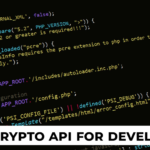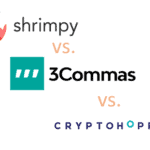Crypto loans, also known as crypto-backed loans or digital asset-backed loans, are financial arrangements where individuals or businesses borrow fiat currency or stablecoins (e.g., USD, EUR) by pledging their cryptocurrency holdings as collateral. These loans allow crypto holders to access liquidity without needing to sell their digital assets, thus enabling them to maintain their long-term investment positions while meeting short-term financial needs.
Crypto loans without collateral are a unique aspect of the lending world, especially in the cryptocurrency space. Unlike traditional loans where you need to provide collateral, these loans allow you to borrow crypto assets without putting up any collateral in return. It might sound like a deal too good to be true, but it’s becoming a significant part of the crypto lending landscape. Let’s break down how these loans work and whether they’re suitable for you.
Usually, when we talk about crypto loans, it involves borrowing money against some form of asset, like Bitcoin or Ethereum. However, in the case of loans without collateral, there’s no need to hand over any assets upfront. This is often referred to as a non-collateralized loan. Essentially, borrowers receive crypto with the expectation of returning it later, without providing any collateral to the lender during the process.

One popular type of crypto loan without collateral is known as a flash loan. These loans are a part of the decentralized finance (DeFi) space, where borrowers can borrow crypto instantly and use it for transactions, all within the same block on the blockchain. It sounds complex, but it’s made possible through smart contracts, which automate financial actions and require no intermediaries. Flash loans are used for quick transactions like arbitrage trading, where people take advantage of small price differences between different exchanges.
However, flash loans come with a catch – if the borrowed funds aren’t returned within the same block, the entire transaction is canceled, and the assets return to their original location. This system protects lenders from losses and ensures that borrowers only profit if their transactions are successful.
While flash loans are innovative, they’re also highly specialized and not suitable for every financial need. Traditional crypto loans usually require collateral, which serves as a safety net for lenders. Collateral can include assets like Bitcoin, Ethereum, or stablecoins, and it ensures that lenders can recover their funds if borrowers default on their loans. Additionally, over-collateralization is common in crypto lending to mitigate risks, meaning borrowers often need to provide more collateral than the loan’s value.
If you’re considering a crypto loan without collateral, there are several factors to keep in mind. Firstly, research the reputation of the lending provider and ensure they comply with regulations. Look out for potential scams and high-interest rates, as well as smart contract auditing to ensure security. While flash loans offer instant liquidity, they’re still experimental and come with risks, so proceed with caution.
Overall, while crypto loans without collateral can be beneficial for specific use cases, they’re not without drawbacks. For those seeking a more traditional lending experience, collateralized loans like those offered by Ledn provide a reliable and reputable option in the crypto lending landscape. With sensible interest rates and innovative tools like B2x loans, Ledn offers a trustworthy solution for crypto users.
Also Read ➤ ➤ 5 Best Business Banking Companies – US | Check NOW!
Table of Contents
Learn with an example
Alright, let’s dive into crypto loans without collateral with a real-life example that might help us understand this complex topic in simpler terms, Indian style.
Meet Priya, a savvy investor from Chennai who’s been eyeing the cryptocurrency market for some time now. She’s heard about crypto loans but is a bit confused about how they work, especially the ones without collateral. So, let’s break it down for her.
Imagine Priya wants to take advantage of a sudden price difference between Bitcoin on two different crypto exchanges. She notices that Bitcoin is priced slightly higher on Exchange A compared to Exchange B. Now, Priya sees this as an opportunity to make some quick profits through arbitrage trading.
Traditionally, Priya would need to have enough funds on hand to make this trade on both exchanges simultaneously. But with crypto flash loans, she doesn’t need to have any funds upfront. Instead, she can borrow the necessary amount of Bitcoin instantly from a decentralized platform like Aave or Equalizer Finance.
So, Priya decides to go for a flash loan from Aave. She sets up a smart contract that allows her to borrow a certain amount of Bitcoin for a very short period, typically within the same block on the blockchain. Now, Priya has the borrowed Bitcoin in her wallet, ready to execute her arbitrage trade.
She quickly moves the borrowed Bitcoin to Exchange B, where it’s priced lower, and sells it for a profit. Then, she uses the proceeds from the trade to buy Bitcoin back on Exchange A at the higher price. Finally, Priya returns the borrowed Bitcoin to the smart contract on Aave, along with a small fee for using the flash loan service.
If Priya’s arbitrage trade is successful and she makes a profit, she gets to keep the extra money after repaying the flash loan. But if her trade fails and she incurs losses, the smart contract cancels all the transactions, and Priya only loses the small fee she paid for the loan.
Now, why would Priya choose a flash loan over a traditional loan with collateral? Well, flash loans offer instant liquidity without the need for upfront capital or collateral. They’re perfect for seizing fleeting opportunities like arbitrage trading, where timing is crucial.
However, Priya knows that flash loans come with risks, especially since they’re still relatively experimental and rely heavily on smart contracts. So, she does her research, chooses a reputable lending platform, and ensures she understands the terms and conditions before taking out a flash loan.
In conclusion, crypto loans without collateral, like flash loans, can be powerful financial tools for investors like Priya, allowing them to capitalize on time-sensitive opportunities in the crypto market. But they’re not without risks, so it’s essential to proceed with caution and choose a trustworthy lending provider.
Also Read ➤ ➤ Top 10 NFTs to buy in 2024 | Check NOW!
How Crypto Loans Without Collateral Work?
Alright, let’s break down how crypto loans without collateral work in simple terms, with an Indian English tone.
Imagine you need some money urgently, but you don’t have anything valuable to offer as security, like gold or property. In regular banks, you’d have a tough time getting a loan without putting up something valuable as collateral. But in the world of cryptocurrencies, there’s a way you can get a loan without having to give anything upfront.
Here’s how it works: instead of giving something valuable as collateral, you can use your cryptocurrency as a sort of promise. You’re basically saying, “Hey, I promise to pay back the loan, and in return, can I borrow some money?” It’s like borrowing from a friend who trusts you’ll pay them back, even if you don’t give them anything as security.
Now, let’s dive a bit deeper. These loans often happen on special platforms called decentralized finance (DeFi) platforms. They use smart contracts, which are like digital agreements that automatically execute when certain conditions are met. These smart contracts ensure everything happens smoothly without needing a bank or any other middleman.
One popular type of loan without collateral is called a flash loan. Picture this: you want to borrow some cryptocurrency to buy more of a different cryptocurrency, hoping its price will go up. With a flash loan, you can borrow the cryptocurrency you need just for a few moments. You make your purchase, and if it works out, you pay back the loan instantly. If not, the whole thing gets canceled, and you don’t owe anything.
The catch with these loans is that they need to happen lightning-fast, all within one block of the blockchain. It’s like making a promise and keeping it within the blink of an eye. Because it’s all happening so quickly, there’s less risk for the lender. They know they’ll get their money back almost immediately, so they’re willing to lend without asking for collateral.
But remember, these loans aren’t for everyone. They’re best for people who understand the risks and have a clear plan for how they’ll use the borrowed money. And just like any financial decision, it’s essential to do your homework and only borrow what you can afford to pay back.
So, in a nutshell, crypto loans without collateral are like borrowing money based on trust and promises, all made possible by smart contracts and the speedy world of cryptocurrencies. It’s a fascinating way for people to access funds without needing traditional assets as security.
Also Read ➤ ➤ How To Choose Right Crypto Exchange For You?- Guide
Risks and Challenges
When you’re dealing with crypto loans without collateral, it’s like walking a tightrope without a safety net. There’s a lot at stake, and you need to be aware of the risks involved.
One big risk is that you’re borrowing money without giving anything valuable as security. So if things don’t go as planned, you could end up losing more than you bargained for. It’s like taking a loan from a friend without any backup plan – if you can’t pay it back, things could get messy.
Another challenge is the fast-paced nature of these loans. They happen lightning-fast, all within a single block of the blockchain. That means you need to have your plan laid out perfectly and execute it flawlessly. If you hesitate or make a wrong move, you could end up losing your borrowed funds.
Then there’s the risk of smart contract failures. These loans rely on smart contracts to execute automatically, but they’re not foolproof. Sometimes, bugs or glitches in the code can cause things to go haywire. It’s like driving a car with autopilot – most of the time, it works perfectly, but there’s always a chance of something going wrong.
Plus, there’s the ever-present threat of scams and fraud. In the wild west of the crypto world, there are plenty of bad actors looking to take advantage of unsuspecting borrowers. It’s like navigating a crowded market – you need to keep your wits about you and watch out for shady characters.
And let’s not forget about the high-interest rates. Since these loans don’t require collateral, lenders often charge sky-high interest rates to offset the risk. It’s like paying a premium for taking a gamble – if you win, it’s great, but if you lose, you could end up paying dearly.
Overall, crypto loans without collateral can be a risky business. They offer a way to access funds quickly and without traditional assets as security, but they come with their fair share of challenges. It’s essential to understand the risks involved and proceed with caution. After all, when it comes to your hard-earned money, it’s better to be safe than sorry.
Also Read ➤ ➤ BEST Crypto Friendly Banks | SWITCH NOW!
Comparison with Collateralized loans
First, let’s talk about collateralized loans. Imagine you’re borrowing money from a friend, but you have to give them something valuable, like your bike or your gold jewelry, as security. This way, if you can’t pay back the money you borrowed, your friend can keep your stuff to cover the loss. It’s like a safety net that protects the lender in case things go south.
Now, let’s flip the coin and talk about crypto loans without collateral. These loans don’t require you to give anything valuable as security. Instead, you’re borrowing money based on your promise to pay it back. It’s like asking your friend for a loan and saying, “Trust me, I’ll pay you back as soon as I can.”
The big difference between the two types of loans is the level of risk involved. With collateralized loans, there’s less risk for the lender because they have something valuable to fall back on if you can’t repay the loan. But with loans without collateral, the risk is higher because there’s no security involved. It’s like lending money to someone without knowing if they’ll be able to pay you back.
Another difference is the interest rates. Collateralized loans usually come with lower interest rates because the lender has that safety net of collateral. But loans without collateral often have higher interest rates to compensate for the increased risk. It’s like paying extra for insurance – you’re willing to shell out a little more to protect yourself against potential losses.
In a nutshell, collateralized loans offer more security for the lender and lower interest rates for the borrower. But loans without collateral can be riskier for both parties, with higher interest rates and no safety net in case things go wrong. It’s essential to weigh the pros and cons of each option carefully before making a decision. After all, you don’t want to end up in a sticky situation where you can’t repay what you borrowed.
Also Read ➤ ➤ 10 BEST Crypto AI Trading Tools | TRY NOW!
Use Cases and Applications
- Trading and Investment: Borrowers use these loans to leverage their positions in cryptocurrency trading. By borrowing funds without collateral, traders can amplify their trading power and potentially increase their profits.
- Short-Term Liquidity: Individuals or businesses facing cash flow shortages can use these loans to access funds quickly without selling their crypto holdings. This is particularly useful for covering immediate expenses or seizing investment opportunities.
- Arbitrage Opportunities: Borrowers exploit price differences across different exchanges to make profits. Crypto loans without collateral enable traders to capitalize on these fleeting opportunities without tying up their assets as collateral.
Factors to Consider Before Borrowing
- Financial Assessment: Determine your borrowing needs and capacity to repay the loan. Assess how much you need to borrow and for what purpose to ensure responsible borrowing.
- Interest Rates and Terms: Compare interest rates and repayment terms offered by different lenders. Look for competitive rates and flexible repayment options that suit your financial situation.
- Reputation and Reliability: Research the reputation and reliability of lending platforms. Read user reviews, check security features, and review terms of service to ensure you’re dealing with a reputable provider.
- Risk Evaluation: Evaluate the risks involved, such as market volatility and potential liquidation of assets in case of default. Understand the consequences of defaulting on the loan and how it may impact your financial position.
Also Read ➤ ➤ 10 Best VPNs for Secure Crypto Trading and Payments
Tips for Borrowers
- Borrow Responsibly: Only borrow what you can afford to repay. Avoid overleveraging yourself, as it can lead to financial difficulties if the market moves against you.
- Research Lending Platforms: Conduct thorough research on lending platforms before choosing one. Look for user reviews, security features, and terms of service to ensure you’re dealing with a trustworthy provider.
- Diversify Borrowing Sources: Spread your borrowing across multiple platforms to mitigate risks. Don’t rely solely on one platform for all your lending needs.
- Stay Informed: Keep abreast of market trends and developments to make informed borrowing decisions. Monitor interest rates, asset prices, and regulatory changes that may affect your loan.
Also Read ➤ ➤ Which Cryptocurrencies will EXPLODE in 2024 | MUST READ!
Conclusion
Crypto loans without collateral offer a unique opportunity for individuals and businesses to access liquidity without the need for traditional assets as security. These loans enable borrowers to maintain their long-term investment positions while meeting short-term financial needs, making them a valuable tool in the crypto lending landscape.
However, before diving into the world of crypto loans without collateral, it’s essential to consider the risks and challenges involved. From smart contract failures to high-interest rates, borrowers must proceed with caution and fully understand the implications of their borrowing decisions.
Despite the risks, crypto loans without collateral have various use cases and applications, from trading and investment to short-term liquidity needs and arbitrage opportunities. By carefully evaluating factors such as interest rates, reputation, and risk exposure, borrowers can make informed decisions that align with their financial goals and risk tolerance.
In conclusion, while crypto loans without collateral offer flexibility and convenience, they’re not without drawbacks. It’s crucial for borrowers to conduct thorough research, assess their financial situation, and borrow responsibly to mitigate risks and maximize potential rewards. With careful consideration and prudent decision-making, crypto loans without collateral can be a valuable tool for navigating the dynamic world of cryptocurrency finance.










